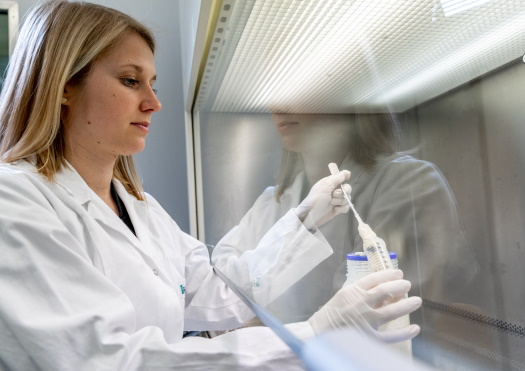
Dairy alternatives

Tasty alternatives to dairy products
A day without dairy products would be hard to imagine for many consumers. People enjoy unprocessed cheese, yogurt, quark and milk products as well as processed in a wide variety of cooked meals. As a result of the steep rise in lactose intolerance and the growing concerns about the climate and animal welfare, the demand for plant-based dairy alternatives is increasing. A range of these alternative foods can already be found on many supermarket shelves but not all of these dairy alternatives taste good or have sufficient functional properties.
Each plant-based raw material has specific functional and sensory properties
The foundation for dairy alternatives is provided by plant proteins which are extracted from a variety of plant raw materials. There are many suitable sources, one of the most common being legumes such as pea, lupin, fava and soybean, which have a high protein content. Other plants, however, such as sunflowers, almonds and oats can serve well as raw materials, which vary according to protein content and composition. Each contributes specific functional and sensory properties with not only the raw material type but also the method used to process it into functional ingredients playing a role to some extent. Pretreatment of the plant raw materials, depending on their content and composition, can be advantageous for further processing, thus influencing their functionality and sensory properties.
The manufacturing process affects the taste and consistency of dairy alternatives
Different sensory and functional properties are required for the various sub-categories of dairy alternatives such as milk, yogurt and cheese substitutes. In addition to the quality of the raw material’s quality, the manufacturing process also influences the finished product. Altering the process parameters during fermentation, for example, will markedly change the taste and consistency. We are closely investigating these determinants in a range of research projects.
360° Tour - Dairy pilot plant
With the mouse button held down, you can move 360° virtually through our dairy pilot plant.
With double click you get full screen mode.
Fermentation to determine nutritional and sensory properties

The fermentation process can be serve to determine plant-based dairy alternatives’ nutritional and sensory properties. This is an effective way of selectively eliminating undesirable off-flavors, while emphasizing desirable flavors such as the acidic touch that lends a fresh milk-like note to dairy alternatives. Plant proteins are cross-linked to influence rheological properties during fermentation so as to achieve the desired texture. Anything goes, from lactic and creamy to chewy and firm. The choice and combination of microorganisms and fermentation parameters has a tremendous impact in shaping the properties that determine quality.
Our food pilot plant can run 0.5-to-20-liter scale trials to support your efforts to develop plant-based alternatives to dairy products.
360° Tour - Fermentation pilot plant
With the mouse button held down, you can move 360° virtually through our fermentation pilot plant.
With double click you get full screen mode.
 Fraunhofer Institute for Process Engineering and Packaging IVV
Fraunhofer Institute for Process Engineering and Packaging IVV